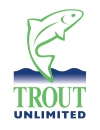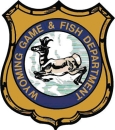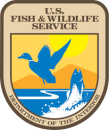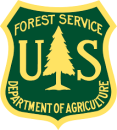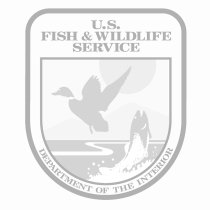Location
States
Utah, WyomingEcosystem
River/streamIntroduction
The Bear River, the largest tributary of the Great Salt Lake, flows through northeastern Utah, southeastern Idaho, and southwestern Wyoming. The headwater tributaries flow mostly on public land, but the river runs into the valley bottoms where land is privately owned. The Upper Bear River is primarily used for agriculture with pasture grasses and hay being the most common crops. The Bear River also supports native fish species of conservation concern such as Bonneville Cutthroat Trout (Oncorhynchus clarkii Utah), Bluehead Sucker (Catostomus discobolus), Northern Leatherside Chub (Lepidomeda copei), andMountain Whitefish (Prosopium williamsoni). Recently, the distribution and abundance of these species have declined.
Numerous gravel push-up dams (river substrate berms) are used as irrigation diversions on the mainstem and tributaries of the Upper Bear River from the Uinta Mountains in Utah, downstream to Woodruff Narrows Reservoir in Wyoming. These diversion dams can result in barriers to fish movement and loss of fish from rivers and streams into canals. In the last decade, landowners and conservation partners have increased research and restoration efforts along the Upper Bear River to rebuild irrigation diversions for water-rights holders to improve fish passage fish passage
Fish passage is the ability of fish or other aquatic species to move freely throughout their life to find food, reproduce, and complete their natural migration cycles. Millions of barriers to fish passage across the country are fragmenting habitat and leading to species declines. The U.S. Fish and Wildlife Service's National Fish Passage Program is working to reconnect watersheds to benefit both wildlife and people.
Learn more about fish passage conditions and habitat. The team has successfully completed several large river restoration projects using nature-based solutions that provide a template for continued collaborative efforts to benefit fish and wildlife and the local ranching community. The diversity of stakeholders and management agencies in the region requires a collaborative effort to unify landowners, conservation organizations, and the public.
Key Issues Addressed
Push-up dams are a common method of raising water to the level of irrigation ditches in the Bear River watershed. These dams require annual reconstruction with heavy equipment that introduces suspended solids into the river, resulting in poor water quality. Altered hydrology from push-up dam construction in Bear River created a stream system with shallow pools that fill quickly with sediment, wide and shallow riffles, and a lack of large wood in the stream. Channelization has also caused aggradation (sediment accumulation), resulting in new gravel bars and riparian riparian
Definition of riparian habitat or riparian areas.
Learn more about riparian vegetation in the form of trees and shrubs that do not mature until after the river migrates. This resulted in a lack of plant cover, a critical component of fish habitat. Collectively, these characteristics create degraded habitat for native fishes. In addition, push-up dams at least partially block fish passage to spawning sites. Irrigation ditches also result in a loss of fish from rivers and streams into canals.
Push-up dams require time intensive and costly annual maintenance by water-rights holders. Additionally, landowners lose valuable agricultural land to rapid streambank erosion that results from maintaining the push-up dams and other factors.
The lack of information on fish movement makes management prioritization difficult. This part of the watershed is also split between the states of Utah and Wyoming, which has historically hindered the initiation of restoration efforts given the lack of state jurisdiction over the full scope and scale of issues. Therefore, collaboration among multiple organizations is required to successfully address research and restoration needs.
Project Goals
- Improve fish passage and movement by removing or restructuring barriers utilizing natural infrastructure such as rock cross-vanes structures
- Assess Cutthroat Trout movement and migration patterns relative to fish passage barriers
- Develop, maintain, and improve collaboration among conservation organizations and the local community in river restoration efforts to improve habitat conditions for native fish and wildlife while allowing private lands to continue as working ranches
Project Highlights
Adopt-a-Trout: Students named radio-tagged trout used to study migration and habitat use. The program engages students in real-world research and bridges the gap between science and education in the fisheries world.
- Stream Restoration and Passage: To enable fish passage, project partners implemented a series of rock cross-vane structures to replace push-up dams at several irrigation diversions (e.g., see Booth Diversion Rebuild video). They also installed three fish screens to prevent fish from entering irrigation canals where they would become easy prey or die at the end of the irrigation season when water is shut off. These improvements reduced or eliminated the use of heavy equipment to construct and maintain push-up dams, leading to improved water quality.
- Data Collection and Education: From 2011 to 2014, Trout Unlimited (TU) conducted a radio-telemetry study of Cutthroat Trout in the mainstem Bear River. The study involved local middle school students and demonstrated to them how to radio-tag Cutthroat Trout, sample macroinvertebrates, conduct riparian sampling, and bring data into the classroom to plot fish movement. This provided education and allowed TU to collect data on fish movement patterns and prioritize restoration efforts accordingly. During this study, TU found that Cutthroat Trout winter in downstream reaches of the Bear River and migrate up to 44 miles upstream to spawn in tributaries during the spring. About a quarter of the fish that migrated were captured (entrained) in irrigation canals. The loss of migratory fish in canals is likely one of the major issues to address on the Upper Bear River.
- Benefits to Wildlife and Landowners: Agencies collaborated with landowners to improve their water diversion structures to meet their water needs and reduce their annual workload. They also improved riparian areas adjacent to diversions by planting trees and shrubs and reconnecting to floodplain water flows. These cottonwood and willow riparian areas provide valuable wildlife habitat.
Lessons Learned
Communication with landowners was a crucial element in the restoration of Bear River. TU and the Partners for Fish and Wildlife Program (PFWP) have found that one-on-one communications with landowners and water users is more effective than broader communication venues such as large meetings or the internet. According to Dave Kimble from the PFWP, “it is almost impossible to over-communicate.” Landowners not only provided land access for project implementation, but also shared their knowledge of the river which helped partners navigate the river more efficiently. Networking among landowners helped increase participation from other landowners in the area. Building long-term relationships with individual landowners was necessary to gain their trust and cooperation.
Landowners responded to conservation partners taking action within 1-3 years rather than large planning efforts requiring 5+ years before on-the-ground action. Early on-the-ground restoration showed progress and led to landowners and other conservation partners supporting the project, which allowed it to gain momentum.
Understanding the movement of Cutthroat Trout informed project partners on where to focus their restoration efforts. Data collected from TU’s movement study confirmed that fish moved across private and public lands. Also, trout that migrated had a high probability of being captured in irrigation canals. Importantly, these data show that individual fish could be affected by many or all restoration projects throughout the Bear River. Landowners were surprised to learn how far the fish migrated, and this finding helped demonstrate the potential for improvement in the river.
Next Steps
- Continue to rebuild mainstem irrigation diversions to improve fish passage and habitat
- Conduct a fish entrainment (capture and loss) study of Bear River irrigation canals to assess priorities for fish screening
- Identify and prioritize water limited sections of the Bear River and tributaries for future flow restoration efforts
- Conduct a Limiting Factor Assessment for Cutthroat Trout to identify what factors most influence their mainstem Bear River population such as fish passage, water quality, or water quantity
- Evaluate fish passage and habitat improvement opportunities on key tributaries for migratory Cutthroat Trout spawning
Funding Partner
- U.S. Fish & Wildlife Service Partners for Fish and Wildlife Program
- USDA Natural Resources Conservation Service’s Regional Conservation Partnership Program
- USDA Forest Service Aquatic Organism Passage
- Wyoming Wildlife & Natural Resource Trust
- Wyoming Department of Environmental Quality
- Western Native Trout Initiative
- Resources Legacy Fund (Open Rivers Fund Program)
- Utah’s Watershed Restoration Initiative
- Utah’s Endangered Species Mitigation Fund
- Uinta-Wasatch-Cache National Forest
- Uintalands Homeowners Association
- American Sportfishing Association’s FishAmerica Foundation
- Utah Department of Environmental Quality
- The Nature Conservancy- Utah
Resources
- Bear River Sediment Total Maximum Daily Load Documents
- Select “Completed Projects”
- KSL Outdoors with Adam Eakle: East Fork Bear River
- Bear River Sediment TMDL Implementation Plan
- Bear River Basin - Wyoming State Wildlife Action Plan, 2017
- Intermountain West Joint Venture Nnewsletter Aarticle: Partnership shines in Bear River RCPP
- Booth Diversion Video
- Upper Bear River Wyoming Video: The Upper Bear River and Open Rivers Fund
- KSL Outdoors with Adam Eakle: East Fork Bear River Segment
- Uinta County Conservation District Newsletter Article: Improving the Bear River one project at a time
- WNTI Tour Project Summaries 2021
- Booth Diversion Fish Entrainment Study Report
- WAFWA Article: Western Resilience Seen Along the Bear River
- Uinta-Wasatch-Cache National Forest
Contacts
- Jim DeRito, Bear River Project Manager, Trout Unlimited, Providence, Utah: jderito@tu.org
- Dave Kimble, USFWS Partners for Fish & Wildlife Program, Green River, Wyoming: david_kimble@fws.gov
- Therese Thompson, Coordinator/Director of Strategic Partnerships, Western Native Trout Initiative, Lakewood, Colorado: tthompson@westernnativetrout.org
CART Lead Author
Krystie Miner, CART Research Specialist, University of Arizona: kminer@arizona.edu
Suggested Citation
Miner, K., A. and DeRito, J. (2022). “Watershed-Level Restoration to Benefit Landowners and Native Fishes in the Upper Bear River.” CART. Retrieved from https://www.fws.gov/project/restoration-landowners-and-native-fish.





